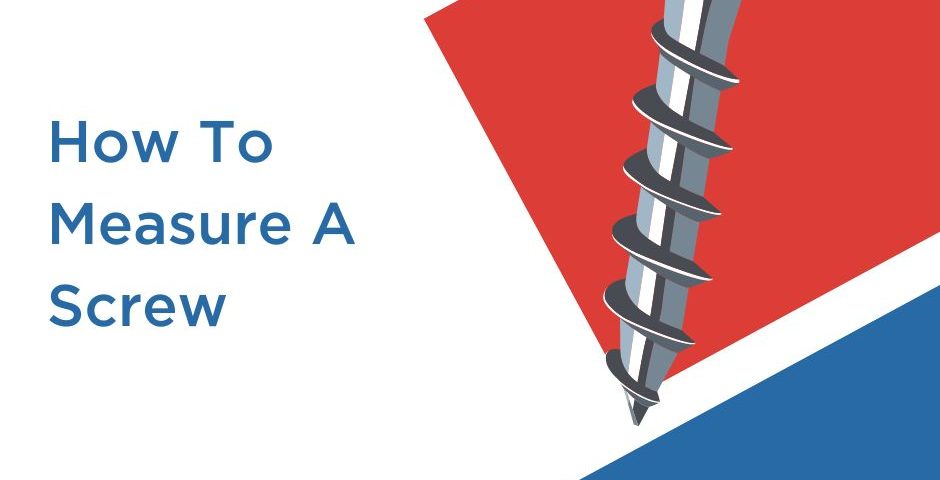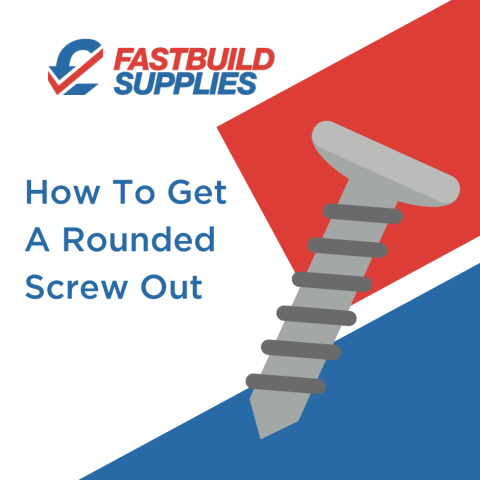
Having the correct components when carrying out building tasks is crucial to ensure your tasks go smoothly and to plan. If your screws are too short or too long, it’s likely to throw a spanner in the works.
Measuring a screw may seem straightforward, but if you’re not sure which exact part of the screw you need to measure, it may not be so obvious. Our step-by-step guide breaks down how to measure the size of a screw correctly so that you can find the right size parts for your project.






Imperial vs Metric Screw Sizes
Before you start measuring your screw or bolt, you need to know if you’re measuring in metric or imperial units. We recommend using metric units, as the majority of screws are measured in millimetres. But, if for some reason you need to convert your measurements into imperial units, or vice versa, our chart below can help.Imperial vs Metric Screw Size Conversion Chart
|
METRIC |
IMPERIAL | ||
| DIAMETER (MM) | LENGTH (MM) | NOMINAL SIZE (GAUGE) | LENGTH (INCHES) |
|
3 |
12 | 4 | 1/2 |
|
3 |
20 | 4 | 3/4 |
| 3 | 25 | 4 |
1 |
|
3.5 |
12 | 6 | 1/2 |
| 3.5 | 16 | 6 |
5/8 |
|
3.5 |
20 | 6 | 3/4 |
| 3.5 | 25 | 6 |
1 |
|
3.5 |
30 | 6 | 11/4 |
| 4 | 20 | 8 |
3/4 |
|
4 |
25 | 8 | 1 |
| 4 | 30 | 8 |
11/4 |
|
4 |
40 | 8 | 11/2 |
| 4 | 45 | 8 |
13/4 |
|
4 |
50 | 8 | 2 |
| 4 | 60 | 8 |
2 1/2 |
|
4 |
70 | 8 | 2 3/4 |
|
5 |
30 | 10 | 11/4 |
| 5 | 40 | 10 |
11/2 |
| 5 | 50 | 10 |
2 |
|
5 |
60 | 10 | 2 1/2 |
|
5 |
70 | 10 |
2 3/4 |
|
5 |
80 | 10 |
3 |
|
5 |
90 | 10 |
3 1/2 |
|
5 |
100 | 10 |
4 |
|
6 |
50 | 12 |
2 |
|
6 |
60 | 12 |
2 1/2 |
|
6 |
70 | 12 |
2 3/4 |
|
6 |
80 |
12 |
3 |
| 6 | 90 | 12 |
3 1/2 |
| 6 | 100 | 12 |
4 |
How to Measure the Length of a Screw
Measuring the length of a screw is crucial for selecting the right size for a project. To accurately measure a screw, use a ruler or a tape measure. Place the screw on a flat surface and align the ruler’s zero mark with the screw’s head (unless it’s a round-head screw, which we’ll go into detail later). Measure from the beginning of the screw head to the end of the screw’s thread.
Does the Screw Length Include the Head?
Yes, if it has a flat head, such as Countersunk Screws. But if it has a rounded head, such as Black Round Head Slotted Woodscrews, then you want to start measuring from the flat part of the head, where it’ll lie flush with the surface that it’s going to be screwed into.
How to Measure the Diameter of a Screw
To measure the diameter of a screw, put the end of the screw against a ruler or measuring tape and measure across the widest part of the screw’s threads in millimetres. If you’re using a screw gauge tool, such as a calliper, to measure your screw, then simply place the calliper jaws over the widest part again and ensure a snug fit for accuracy. Refer to our conversion chart above if you need to convert to imperial/metric.
Measuring the Thread Pitch
Measuring the thread pitch of a screw involves using a thread pitch gauge or counting threads. With a gauge, match the screw’s threads against the gauge teeth finding a perfect fit. Alternatively, you can use a ruler or measuring tape if you don’t have a thread pitch gauge. Line the length of the screw up against a ruler and count how many threads there are over a 1-inch span, and divide by the length to calculate the thread pitch. The most common inch numbers are between 35 and 40. Understanding the dimensions of screws is fundamental for successful projects. Accurate measurements ensure the right fit, ensuring your work goes to plan. To explore a wide range of quality screws for your next endeavour, visit our website.




